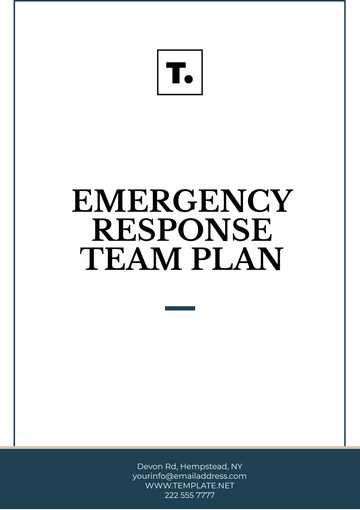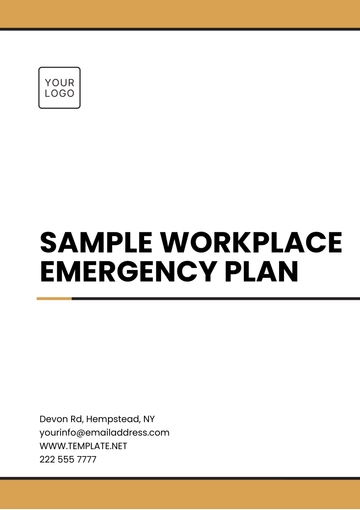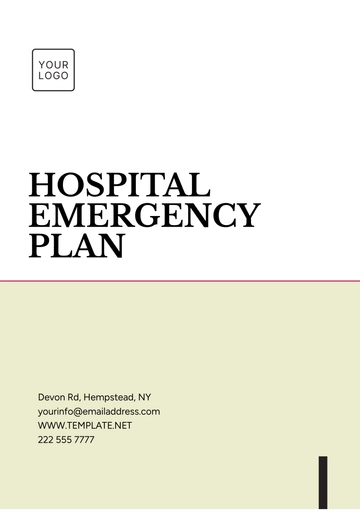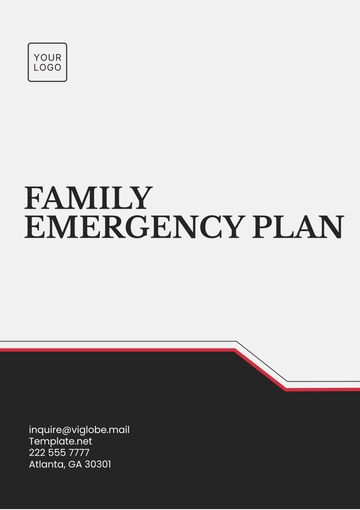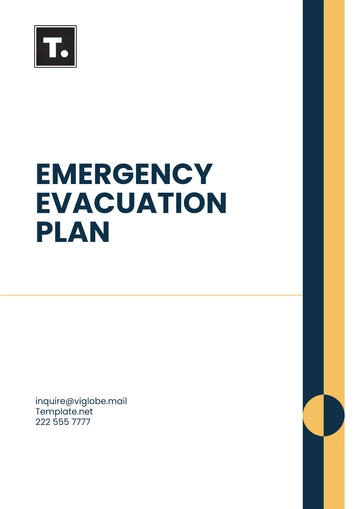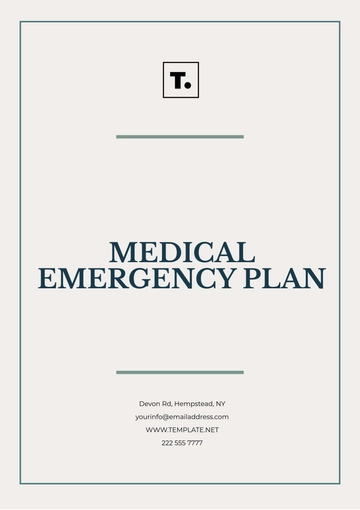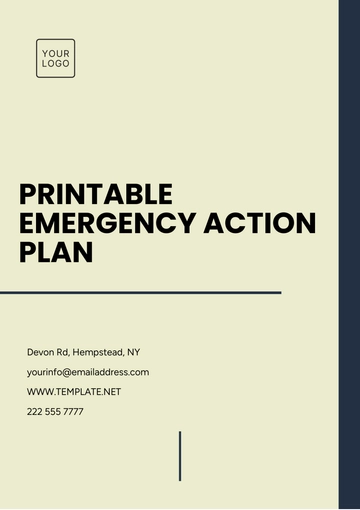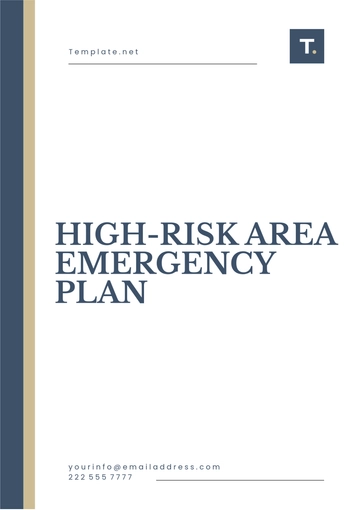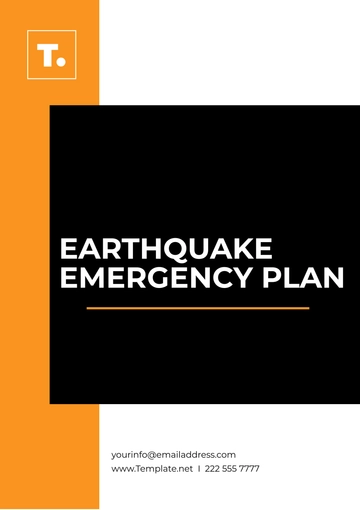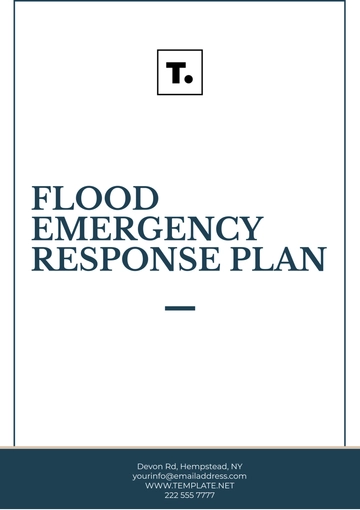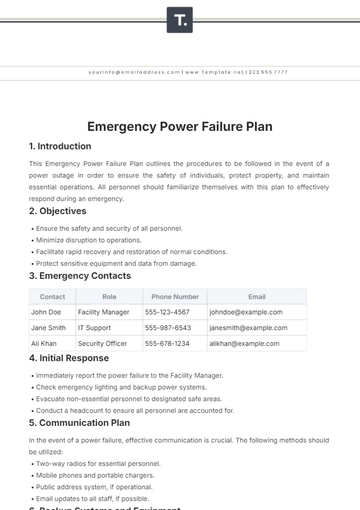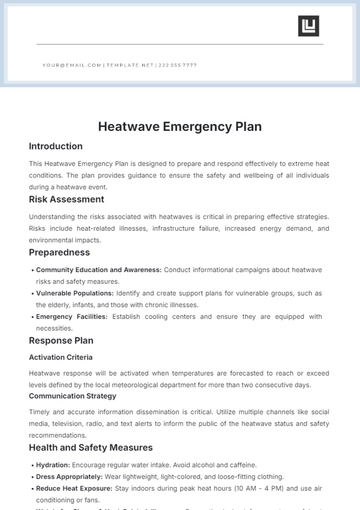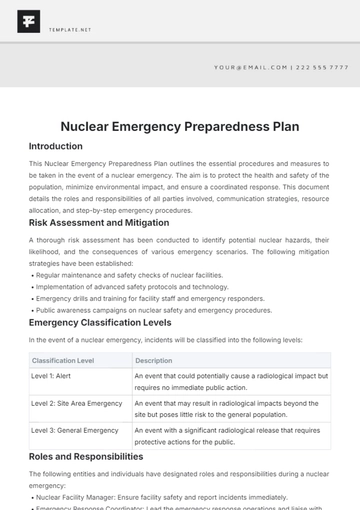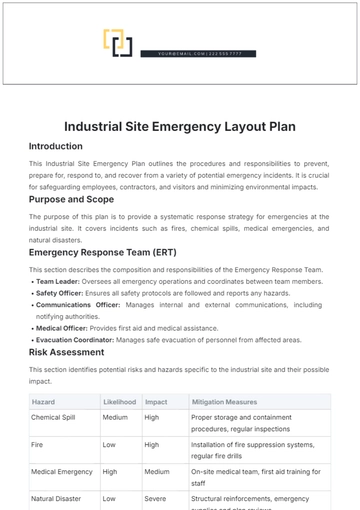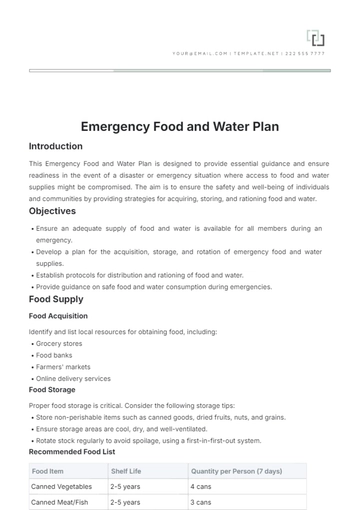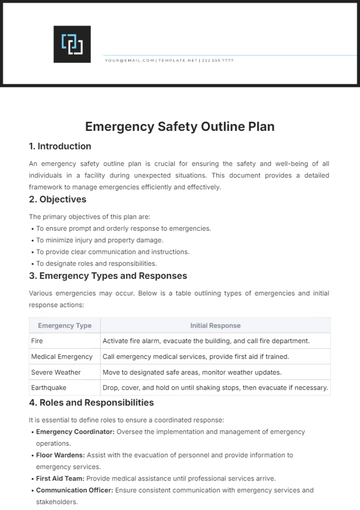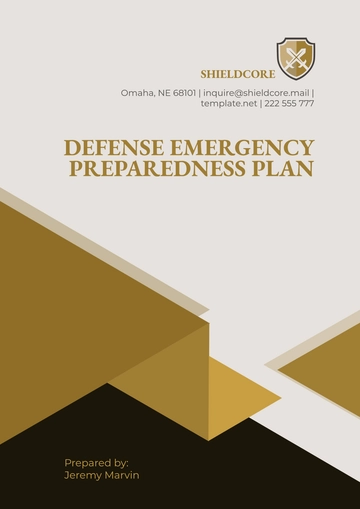Free Nuclear Emergency Preparedness Plan
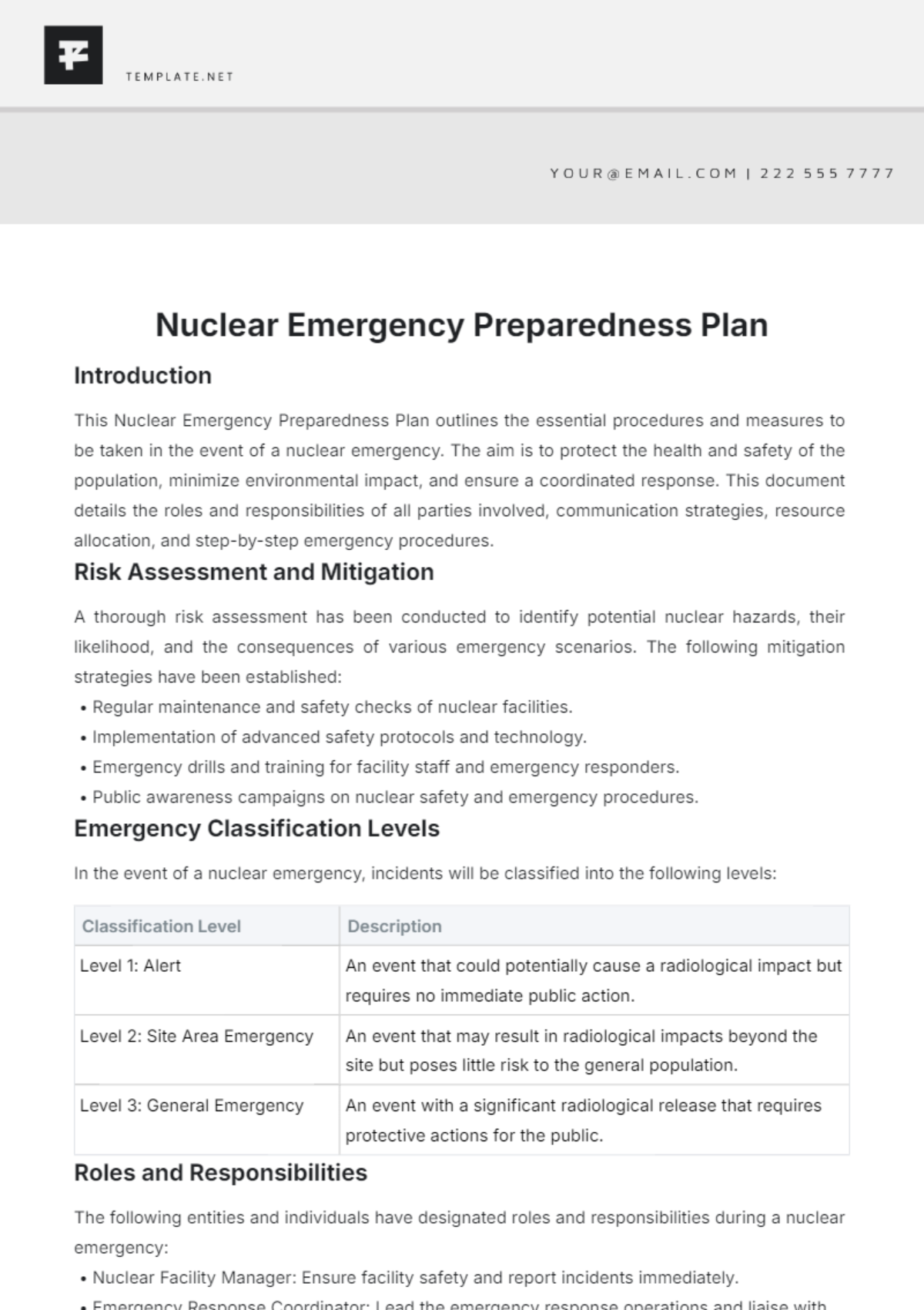
Introduction
This Nuclear Emergency Preparedness Plan outlines the essential procedures and measures to be taken in the event of a nuclear emergency. The aim is to protect the health and safety of the population, minimize environmental impact, and ensure a coordinated response. This document details the roles and responsibilities of all parties involved, communication strategies, resource allocation, and step-by-step emergency procedures.
Risk Assessment and Mitigation
A thorough risk assessment has been conducted to identify potential nuclear hazards, their likelihood, and the consequences of various emergency scenarios. The following mitigation strategies have been established:
Regular maintenance and safety checks of nuclear facilities.
Implementation of advanced safety protocols and technology.
Emergency drills and training for facility staff and emergency responders.
Public awareness campaigns on nuclear safety and emergency procedures.
Emergency Classification Levels
In the event of a nuclear emergency, incidents will be classified into the following levels:
Classification Level | Description |
|---|---|
Level 1: Alert | An event that could potentially cause a radiological impact but requires no immediate public action. |
Level 2: Site Area Emergency | An event that may result in radiological impacts beyond the site but poses little risk to the general population. |
Level 3: General Emergency | An event with a significant radiological release that requires protective actions for the public. |
Roles and Responsibilities
The following entities and individuals have designated roles and responsibilities during a nuclear emergency:
Nuclear Facility Manager: Ensure facility safety and report incidents immediately.
Emergency Response Coordinator: Lead the emergency response operations and liaise with all authorities involved.
Public Information Officer: Disseminate accurate and timely information to the public and media.
Local Government Officials: Implement protective actions and provide resources for emergency response.
First Responders: Execute emergency procedures and provide medical assistance as needed.
Communication Plan
Effective communication is crucial in a nuclear emergency. This plan involves:
Activation of emergency hotlines for public inquiries.
Regular updates to the media and via official websites and social media.
Coordination with national and international agencies for information and support.
Use of sirens and public address systems for community alerts.
Protective Actions
Depending on the severity of the situation, the following protective actions may be recommended:
Sheltering in place or evacuation of affected areas.
Distribution of iodine tablets to reduce radioactive exposure.
Decontamination procedures for affected individuals and areas.
Establishment of exclusion zones around the site of the incident.
Resource Management
Efficient management of resources is necessary to support emergency operations. This includes:
Access to emergency funding and logistics support.
Allocation and distribution of medical supplies and protective equipment.
Coordination with local suppliers for food and water supplies.
Utilization of emergency shelters and reception centers for displaced individuals.
Review and Improvement
This plan will be reviewed and updated annually to incorporate new information, technology advancements, and lessons learned from drills and real incidents. Continuous improvement is essential to enhance preparedness and response capabilities.
Conclusion
This comprehensive Nuclear Emergency Preparedness Plan serves as a guide for responding effectively to nuclear incidents. By adhering to the procedures outlined in this document, stakeholders can work together to minimize risks and ensure the safety and well-being of the community.
- 100% Customizable, free editor
- Access 1 Million+ Templates, photo’s & graphics
- Download or share as a template
- Click and replace photos, graphics, text, backgrounds
- Resize, crop, AI write & more
- Access advanced editor
Prepare your organization for unforeseen nuclear emergencies with our Nuclear Emergency Preparedness Plan Template. This customizable and downloadable template streamlines your response strategies, ensuring clarity and effectiveness in crisis situations. Easily modify the content to fit your specific needs, and enjoy the convenience of a printable format. Plus, it’s editable in our AI Editor Tool for seamless updates.
You may also like
- Finance Plan
- Construction Plan
- Sales Plan
- Development Plan
- Career Plan
- Budget Plan
- HR Plan
- Education Plan
- Transition Plan
- Work Plan
- Training Plan
- Communication Plan
- Operation Plan
- Health And Safety Plan
- Strategy Plan
- Professional Development Plan
- Advertising Plan
- Risk Management Plan
- Restaurant Plan
- School Plan
- Nursing Home Patient Care Plan
- Nursing Care Plan
- Plan Event
- Startup Plan
- Social Media Plan
- Staffing Plan
- Annual Plan
- Content Plan
- Payment Plan
- Implementation Plan
- Hotel Plan
- Workout Plan
- Accounting Plan
- Campaign Plan
- Essay Plan
- 30 60 90 Day Plan
- Research Plan
- Recruitment Plan
- 90 Day Plan
- Quarterly Plan
- Emergency Plan
- 5 Year Plan
- Gym Plan
- Personal Plan
- IT and Software Plan
- Treatment Plan
- Real Estate Plan
- Law Firm Plan
- Healthcare Plan
- Improvement Plan
- Media Plan
- 5 Year Business Plan
- Learning Plan
- Marketing Campaign Plan
- Travel Agency Plan
- Cleaning Services Plan
- Interior Design Plan
- Performance Plan
- PR Plan
- Birth Plan
- Life Plan
- SEO Plan
- Disaster Recovery Plan
- Continuity Plan
- Launch Plan
- Legal Plan
- Behavior Plan
- Performance Improvement Plan
- Salon Plan
- Security Plan
- Security Management Plan
- Employee Development Plan
- Quality Plan
- Service Improvement Plan
- Growth Plan
- Incident Response Plan
- Basketball Plan
- Emergency Action Plan
- Product Launch Plan
- Spa Plan
- Employee Training Plan
- Data Analysis Plan
- Employee Action Plan
- Territory Plan
- Audit Plan
- Classroom Plan
- Activity Plan
- Parenting Plan
- Care Plan
- Project Execution Plan
- Exercise Plan
- Internship Plan
- Software Development Plan
- Continuous Improvement Plan
- Leave Plan
- 90 Day Sales Plan
- Advertising Agency Plan
- Employee Transition Plan
- Smart Action Plan
- Workplace Safety Plan
- Behavior Change Plan
- Contingency Plan
- Continuity of Operations Plan
- Health Plan
- Quality Control Plan
- Self Plan
- Sports Development Plan
- Change Management Plan
- Ecommerce Plan
- Personal Financial Plan
- Process Improvement Plan
- 30-60-90 Day Sales Plan
- Crisis Management Plan
- Engagement Plan
- Execution Plan
- Pandemic Plan
- Quality Assurance Plan
- Service Continuity Plan
- Agile Project Plan
- Fundraising Plan
- Job Transition Plan
- Asset Maintenance Plan
- Maintenance Plan
- Software Test Plan
- Staff Training and Development Plan
- 3 Year Plan
- Brand Activation Plan
- Release Plan
- Resource Plan
- Risk Mitigation Plan
- Teacher Plan
- 30 60 90 Day Plan for New Manager
- Food Safety Plan
- Food Truck Plan
- Hiring Plan
- Quality Management Plan
- Wellness Plan
- Behavior Intervention Plan
- Bonus Plan
- Investment Plan
- Maternity Leave Plan
- Pandemic Response Plan
- Succession Planning
- Coaching Plan
- Configuration Management Plan
- Remote Work Plan
- Self Care Plan
- Teaching Plan
- 100-Day Plan
- HACCP Plan
- Student Plan
- Sustainability Plan
- 30 60 90 Day Plan for Interview
- Access Plan
- Site Specific Safety Plan

